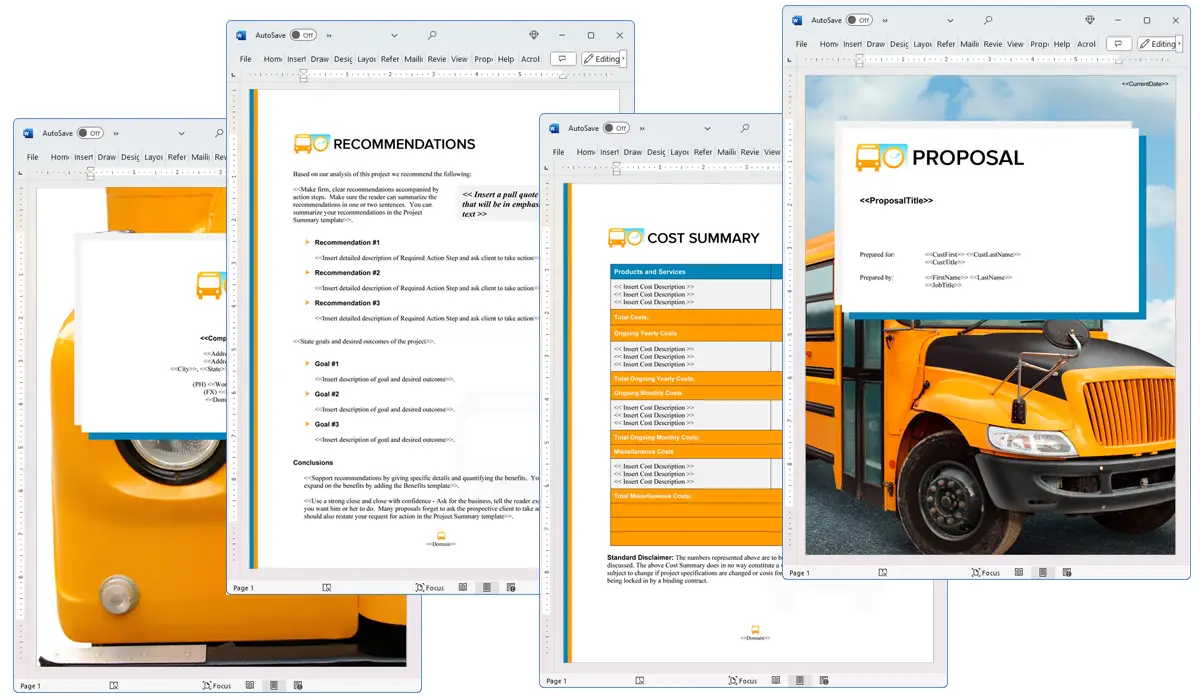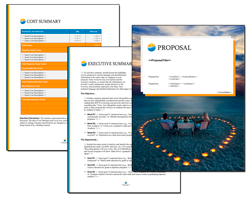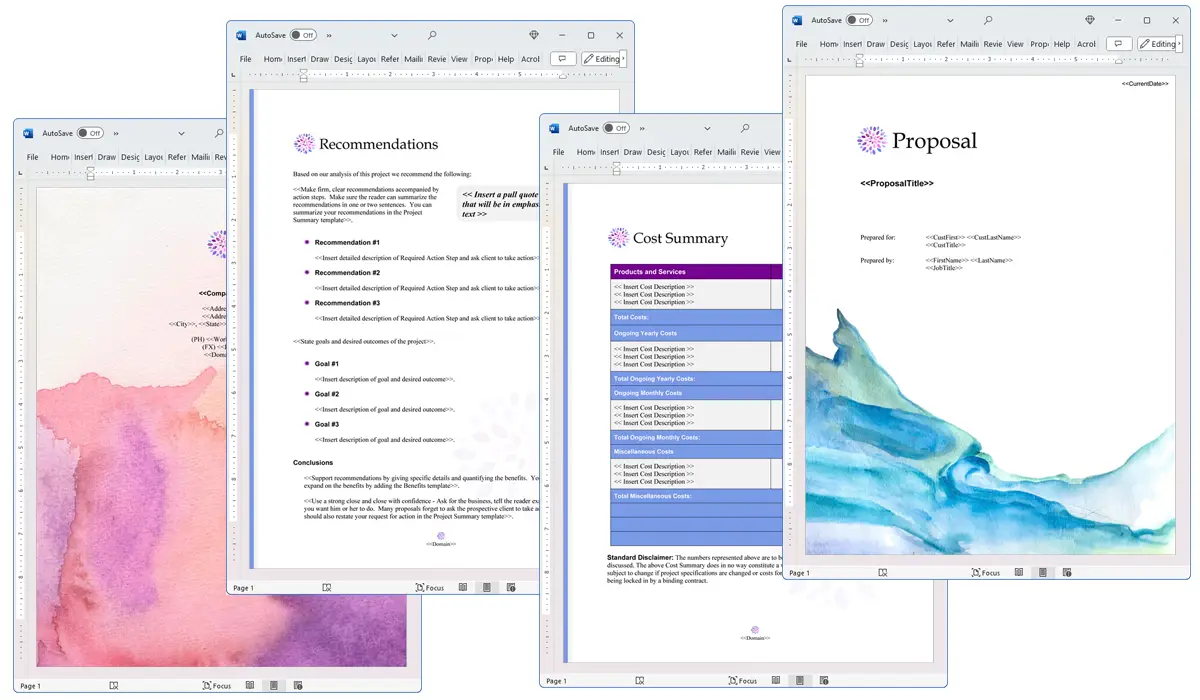What is the Classifications chapter used for?
Proposal Kit Professional Bundle adds more design themes, all six Contract Packs,
a project management library, and Expert Edition software.

Illustration of Proposal Pack Transportation #11
We include this Classifications chapter template in every Proposal Pack, along with thousands more. You assemble this chapter with others in various combinations to create custom-tailored business proposals, plans, reports, and other documents. Proposal Packs apply custom visual designs to the templates, giving the final documents a consistent professional finish.
 DOWNLOADABLE, ONE-TIME COST, NO SUBSCRIPTION FEES
DOWNLOADABLE, ONE-TIME COST, NO SUBSCRIPTION FEES
Overview of the Classifications Chapter
In the Proposal Kit system, the Classifications chapter serves as an important component for organizing information in a clear, systematic way. When creating a business proposal, it is crucial to classify items, personnel, or tasks to demonstrate a thorough understanding of the project's structure. This chapter helps in setting a framework that can clarify how various elements are categorized according to their common characteristics. By doing so, it provides the proposal's readers with a clear understanding of the project's components and their interrelationships.
How is the Classifications Chapter Used?
The Classifications chapter is used in a business proposal to describe and define the categories or groups under which the project's elements are organized. This might involve classifying types of services offered, categorizing personnel based on skill levels, or grouping tasks into phases or milestones. Employing a clear classification system enhances the readability of the proposal and helps to manage complex information in an accessible manner. It also assists stakeholders in understanding the scope and structure of the proposed project or business relationship.
What is Included in the Classifications Chapter?
Typically, the Classifications chapter includes:
- Definitions and descriptions of each category or class.
- Criteria for how items or personnel have been grouped.
- Explanations of the relevance and importance of particular classifications withconsidering the situation of the proposal.
- Any standard industry classifications that are applicable to the proposal.
- Visual aids such as charts or tables that map out the classifications for better comprehension.
Use Case Examples for the Classifications Chapter
- Service Industry Proposals: Classifying different service tiers offered to clients, such as basic, premium, and enterprise levels.
- Construction Projects: Grouping tasks into phases like planning, execution, and completion.
- IT Proposals: Classifying software and hardware requirements into important and optional.
- Human Resources Initiatives: Categorizing employees into managerial, technical, and operational groups.
- Scientific Research Proposals: Using standard taxonomy to classify research subjects or experimental groups.
Key Takeaways
- The Classifications chapter provides a structured way to organize complex information within a proposal.
- It enhances the readability and professionalism of a business proposal by clearly defining groups and categories.
- This chapter is and can be adapted to a wide range of industries and proposal types.
- Effective use of classifications can help stakeholders quickly understand the proposal's scope and structure.
- The chapter supports clear communication by visually mapping out the classifications, which aids in better comprehension.

Illustration of Proposal Pack Travel #4
 What Our Clients Say
What Our Clients SayLove the automatic formatting and the document management. With so many content examples, we feel like we never have to start from scratch or reinvent anything. It’s made our lives very easy."
Public Relations Manager
Relic Agency
 4.7 stars, based on 842 reviews
4.7 stars, based on 842 reviewsRelated Chapters
Document Layouts Using the Classifications Chapter

The Classifications chapter and other chapters are integrated into a Word document as illustrated here in the Proposal Pack Artsy #9 design theme. There are hundreds of design themes available, and every design theme includes the Classifications chapter template.
A proper business proposal will include multiple chapters. This chapter is just one of many you can build into your proposal. We include the complete fill-in-the-blank template in our Proposal Pack template collections. We also include a library of sample proposals illustrating how companies in different industries, both large and small, have written proposals using our Proposal Packs. This template will show you how to write the Classifications.
We include a chapter library for you to build from based on your needs. All proposals are different and have different needs and goals. Pick the chapters from our collection and organize them as needed for your proposal.
Using the Proposal Pack template library, you can create any business proposal, report, study, plan, or document.
 Ian Lauder has been helping businesses write their proposals and contracts for two decades. Ian is the owner and founder of Proposal Kit, one of the original sources of business proposal and contract software products started in 1997.
Ian Lauder has been helping businesses write their proposals and contracts for two decades. Ian is the owner and founder of Proposal Kit, one of the original sources of business proposal and contract software products started in 1997.By Ian Lauder
 Published by Proposal Kit, Inc.
Published by Proposal Kit, Inc.


 Cart
Cart
 Facebook
Facebook YouTube
YouTube X
X Search Site
Search Site